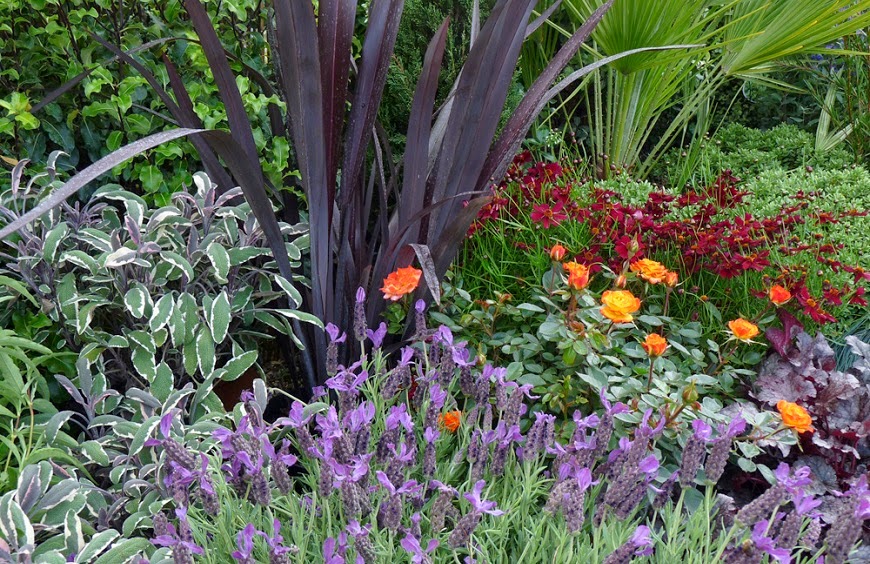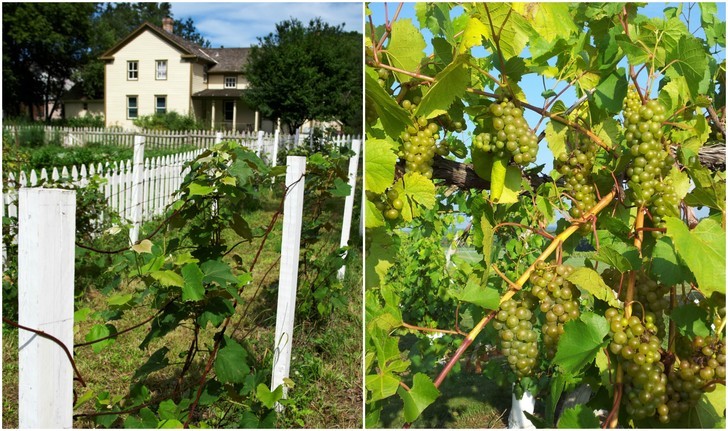The garden of aromatic plants.
Aromatic and medicinal plants are hardy and strong species that often survive in both hot and cold climates, and are hardly attacked by pests or fungal diseases that can affect their development. In addition to the indisputable culinary and medicinal properties, these plants are sometimes very decorative, beautiful to look at, with colorful and fragrant flowers. But we must choose the area of the garden that best suits the needs of each plant, and we must also prepare the ground carefully, in which we intend to plant them. The carefully chosen planting offers year-round color and texture, and even fragrance and some protection on a windy day.

The right place for a garden of aromatic plants.
When choosing the corner of the garden dedicated to the cultivation of medicinal and aromatic plants, special attention must be paid to locate the place least exposed to sources of pollution (neighboring streets, heavy traffic, etc.).
Among the variables that are very important for the calculation of the choice of the place, are:
1) Sun exposure.
Some plants are light-loving, and for successful development, they need to grow in areas exposed to sunlight for several hours a day, but other plants vegetate well only if grown in shade or complete darkness.
2) Exposure to the wind.
Almost all plants, even the hardiest, must be protected from the winds with great care. Therefore, we must identify the most protected position, which will guarantee the plants a certain protection against excessive cold.
3) Type of soil.
It is almost always necessary to choose well-draining soils, in order to avoid the dreaded standing water, causing endless problems for plants and their care. In fact, excess humidity, in addition to promoting the development of fungal diseases, negatively affects the quality of medicinal and aromatic plants. Therefore, clay soils should normally be avoided where there is excessive retention of water with the consequences described above, care must also be taken to avoid too rich soil, in fact, the development of vegetation will decrease the amount of active and aromatic compounds present in the plant. In general, the best option for this type of aromatic plant garden , is a light and slightly alkaline soil, facing south in areas with colder climates,
Scheme for the arrangement of plants.
Plants and balsamic weather.
The collection of aromatic and medicinal plants for conservation should always be carried out at the balsamic moment of each species. The balsamic season is the time when the presence, in the plant, of essential oils and aromatic principles is at its peak. It should be remembered that these characteristics also depend on the age of the plant, the character of the seasons and the time of harvest.
This is a general scheme for the collection of different aromatic plants.
- March: caper, gentian.
- April: calendula, dandelion.
- May: lovage, sorrel, chamomile, parsley.
- June: borage, tarragon, mallow, yarrow, rosemary, rue, sage, thyme.
- July: laurel, wormwood, basil, cumin, mugwort, hyssop, lavender, lemon balm, mint, oregano, mustard.
- August: garlic, onion, coriander, fennel, iris, hops, marjoram, red pepper, tasty, parsley, celery.
- September: dill, angelica, calendula, capers, dandelion, horseradish.
- October: gentian, juniper, mallow, lovage.
- November: laurel.
Some examples of garden design with these plants.
Scented garden.
how to create a corner with delicious fragrance of flowers, so that in summer it spreads everywhere. The species used are summer flowering, they bloom simultaneously and are predominantly white. The species are all bulb plants, with the exception of Nepeta, a blue-purple herbaceous perennial plant, it also has an exquisite flower scent, a persistent fragrance of its leaves. All species are grown in the ground and not in pots.
1) HymenocallisXfestalis (South African hyacinth).
2) Nepeta X fassen.
3) Amaryllis belladonna (March lily).
4) Acidanthera bicolor.
5) Galtonia candicans.
6) Cardiocrinum giganteum (Lily).
A cover for bees.
Planting a tree hedge for bees ensures continuous nectar and pollen production from February to September. High pollen production is required at the beginning of the season and high nectar production from April to July.
1) Linden.
2) False acacia.
3) Cherry.
4) Hazel.
5) Wild plum.
6) Viburnum opalus (Pink sabuco).
7) Wild rose.
8) Henna.
9) Wild cherry.
10) Dandelion.
11) White spirea.
12) Clover.
13) Ipomea (scare wolves).
14) Lotus corniculatus (crow’s foot).
15) Malva.
A flower bed of aromatic plants.
1) Angelica archangelica (Angelica).
2) Laurus nobilis (Laurel).
3) Petroselinum hortense (Curly parsley).
4) Ocymum basilicum (Basil).
5) Rosmarinus officinalis (Rosemary).
6) Symphytum officinalis (Comfrey).
A bed of aromatic plants 2.
1) Lavender spica (Lavender).
2) Foeniculum vulgare (Fennel).
3) Borrago officinalis (Borage).
4) Salvia officinalis (Salvia).
5) Matricaria chamomilla (Chamomile).
6) Petroselinum hortense (Curly parsley).
7) Allium cepa (Bighead onion).







